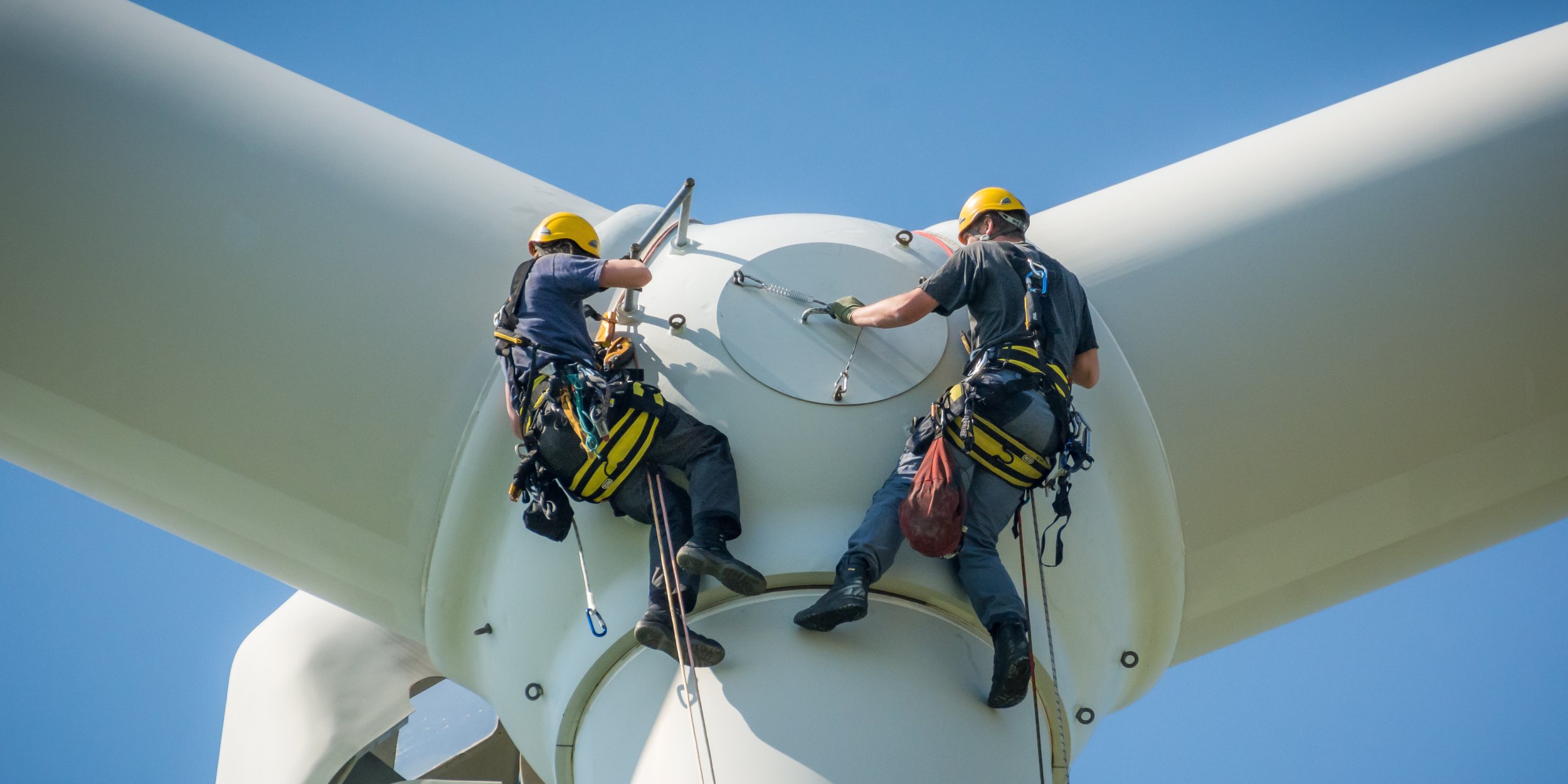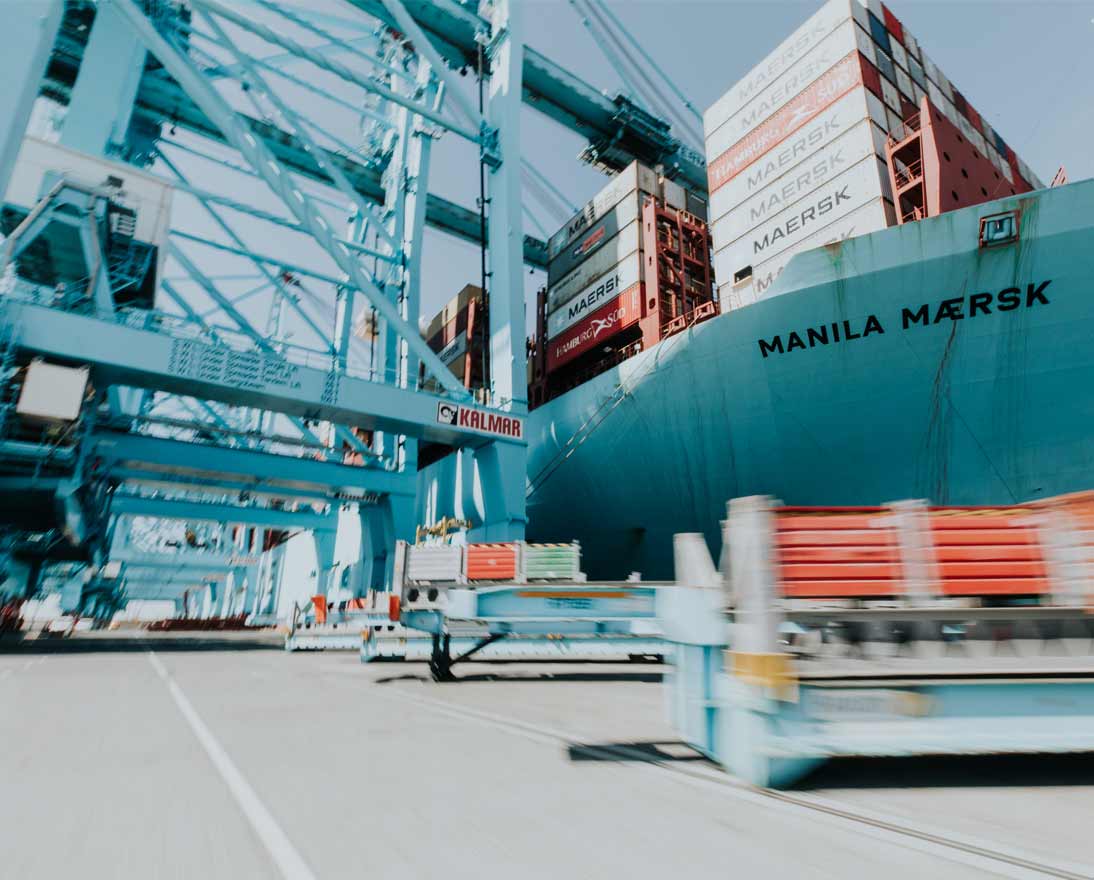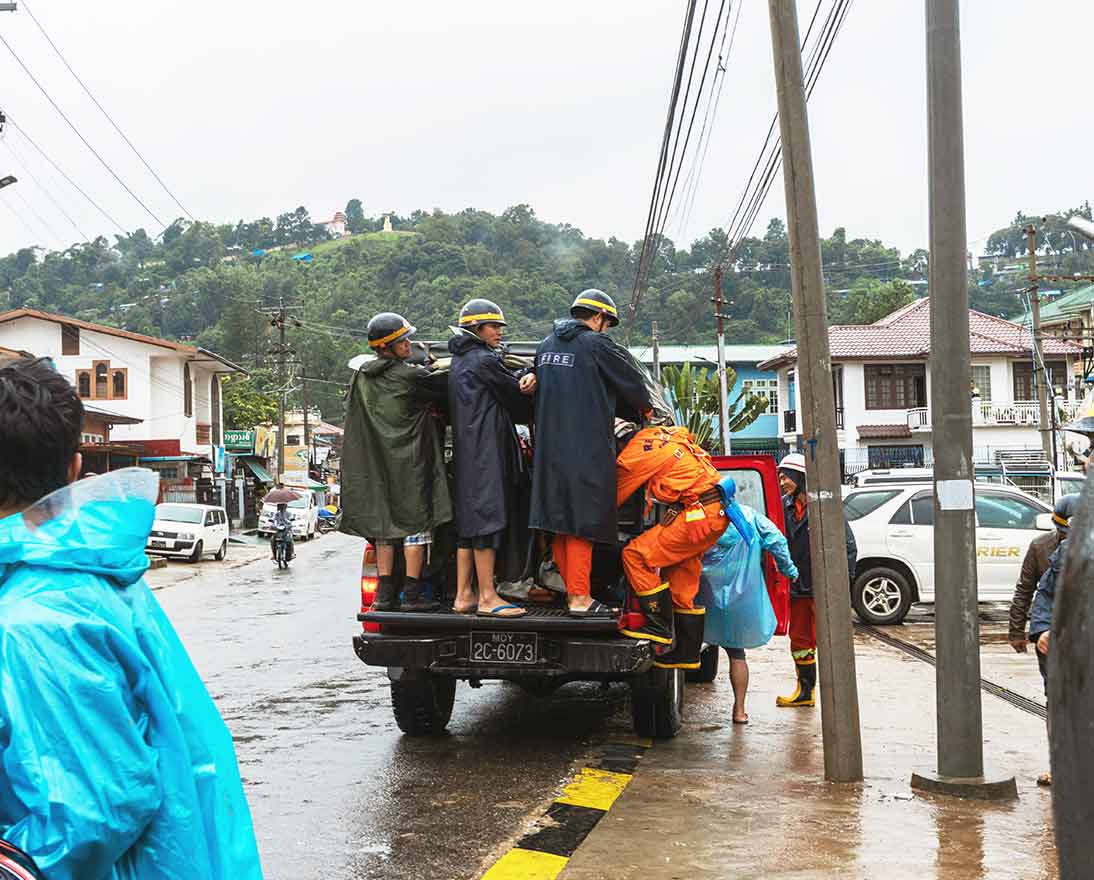Future-proofing renewables in the face of extreme weather
Climate resilienceArticleJune 23, 2025
The clean energy transition is an economic and environmental imperative. To ensure the resilience of renewable energy systems to extreme weather events, tried and tested solutions are available to reduce risk and avoid disruption.
The rise of renewables in the energy mix has acquired an unstoppable momentum. By 2030, the International Energy Agency expects renewable energy sources like solar, wind and hydropower to meet around 46 percent of the world's electricity demand, up from roughly 32 percent in 2024 and 19 percent in 2000.
The move away from fossil fuels will see a reduction in greenhouse gas emissions. However, we are already seeing more frequent and severe weather events related to the rise in global average temperature. And since solar, wind, and hydropower plants draw their energy directly from the environment, supply and demand is particularly vulnerable to hail, windstorms, flood, drought and other weather extremes.
Yet this shouldn’t be cause for alarm as tried and tested solutions are available to ensure a stable and reliable power supply even under adverse conditions.
“The solutions with renewables start with planning,” says Amar Rahman, Global Head Sustainability & Climate Solutions, Zurich Resilience Solutions. “Where do you build a facility? What are the material risks for a particular type of technology? Factors that are critical for wind turbines and solar panels may have little impact on hydropower stations.”
Avoiding placing wind turbines in areas prone to frequent hurricanes or tornadoes may seem self-evident. But, as Emmanuel Mtika, Global Head of Power Generation at Zurich Insurance Group (Zurich) points out, we cannot rely on historical data alone.
“When it comes to location, past incidents are not necessarily a guide,” he says. “You may not be in a flood zone today but could be tomorrow. If our data shows that by 2050, you could actually be more vulnerable to flooding, you need to be adopting those resilience measures in your design now. That’s the sort of dialogue we are having with our customers.”
Know your peril, he adds. If heat waves are leading to an increased risk of wildfires, make sure you maintain clear vegetation zones around the site.
“We have the know-how,” says Mtika. “We just need to apply it as early as possible, ideally during the planning phase, as this is the most cost-effective way to implement resilience measures.”
Solar
Solar generation has doubled over the last three years. In 2024, it accounted for 6.9 percent of global electricity. To mitigate damage from strong winds, hail and lightning, solutions include:
- Choosing hail- and heat-resistant modules with durable frames.
- Adopting sturdy mounting systems so that panels can withstand high winds.
- Designing installations for colder climates with steep tilt angles and anti-icing systems, and developing snow removal plans.
- Raising solar installations in flood-prone areas to prevent water damage.
Wind
Wind power, which provides 8.1 percent of global electricity, is especially affected by extreme weather events. Heavy winds can damage wind turbines, and extreme cold can cause ice buildup, leading to outages. Offshore wind towers and foundations can also be damaged by storm surges and sea ice.
- In extreme wind zones, the focus is on optimized spacing and robust foundations to combat the problem of turbine-to-turbine turbulence where the flow behind one turbine can affect those downstream.
- Wind turbines are also being designed to withstand typhoons by adjusting the pitch or bend of their blades.
- To deal with cold, the structure housing the machinery that converts wind energy into electricity can be equipped with heaters and insulated control systems.
- Some turbines have de-icing products in their rotors to prevent ice buildup and others can detect ice on their blades and shut down until it melts.
Hydropower
Hydropower is currently the largest renewable source (14.3 percent) but climate change is having a drastic effect on its generation across many countries. In Zambia, for example, where hydropower, provides over 80 percent of the country’s electricity, a shorter rainy season and droughts have led to blackouts and power rationing.
To buffer against drought, it may be possible in some cases to increase water storage capacity through dam heightening and upstream retention basins. Installing efficient turbines capable of generating power under lower flows is another potential solution.
At the opposite end of the spectrum, extreme rain and floods are also a risk as they can damage dam infrastructure. Solutions include:
- Building with materials and designs that can withstand extreme weather events or natural disasters like earthquakes.
- Deploying advanced monitoring systems to track weather conditions and water levels, allowing for timely interventions.
- Implementing advanced flood management systems to control water flow and prevent dam overflow.
- Reinforcing dam structures and expanding spillway capacity.
- Managing the surrounding environment to reduce the risk of landslides.
Smart grids
Whatever energy sources are used, the fact remains that much of the world’s energy grid and infrastructure was built at a time when different temperatures and weather conditions prevailed. It needs upgrading and modernizing and that’s particularly true if it is to successfully handle the increased flow of renewable energy.
“Extreme events are happening more often, at the same time, impacting new regions, and outside the normal season,” says Rahman. He cites the example of the U.S., which at the beginning of 2025 saw wildfires in Los Angeles and snow storm warnings and advisories in 20 states, within the space of a month. “Add to that increased urbanization, more people using resources and there’s simply too much pressure on an ageing infrastructure,” he adds.
Smart grids which gather real-time data on energy usage and grid conditions are better able to manage the variable nature of solar and wind and thereby balance supply with demand. This allows them to handle the on and off nature of renewables more efficiently than traditional grids. When wind and solar photovoltaic (PV) are not performing optimally, then you can deploy battery storage facilities and pumped hydro.
Pumped hydro storage involves pumping water uphill to a higher reservoir during periods of low electricity demand, and then releasing it through turbines to generate power when needed. This ability to provide a more constant and predictable energy supply makes it a valuable part of a diversified renewable energy system.
For its part, the International Energy Agency has proposed a global 1,500 gigawatt storage capacity target for 2030. Efficient battery energy storage systems (BESS) quickly respond to imbalances between supply and demand in the system and help stabilize the grid. And just as with power generation, you can make provision for extremes of temperature with heating, ventilation and air conditioning; implement early warning and monitoring systems; use fire-resistant materials and automatic suppression systems to guard against wildfires; and raise containers and make them flood proof.
Thermal runaway in battery storage systems sees a battery's temperature rise uncontrollably, potentially leading to fires or explosions. Zurich is working with some customers in the UK on a fire management strategy, spacing lithium batteries so that fires are contained and losses minimized.
Diversification
Integrating a variety of renewable energy technologies, including geothermal and biomass, can enhance the resilience of the grid by mitigating risks associated with any single source. “We can actually achieve quite a lot of reliability and resilience just by diversifying the energy mix,” says Mtika.
Finally, the fact that renewable energy sources are often distributed, meaning they are located closer to users or on a smaller scale than conventional, centralized power plants, should prove to be a source of strength. It makes them less susceptible to single incidents of failure that might result from extreme weather. In addition, they can operate alone or be connected to other modular units or the larger grid, so they can draw on other power sources during an emergency.
Better planning
Ensuring that solar, wind, and hydro power systems can withstand extreme weather events is not rocket science. It involves a combination of robust design, strategic planning, and technological advancements.
Advanced weather forecasting, early warning systems, regular inspections and maintenance, and well-drilled emergency action plans, can all help strengthen the resilience of the overall system.
With the share of wind and solar PV in global electricity generation set to double to 30 percent by 2030, all those involved in the transition need to be working towards greater energy security now.
“Recognizing the vulnerabilities of renewable energy systems to climate change doesn’t mean that we shouldn’t be making the transition to renewables,” says Mtika. “We need to plan for the impacts of climate change on the energy system as a whole.”



